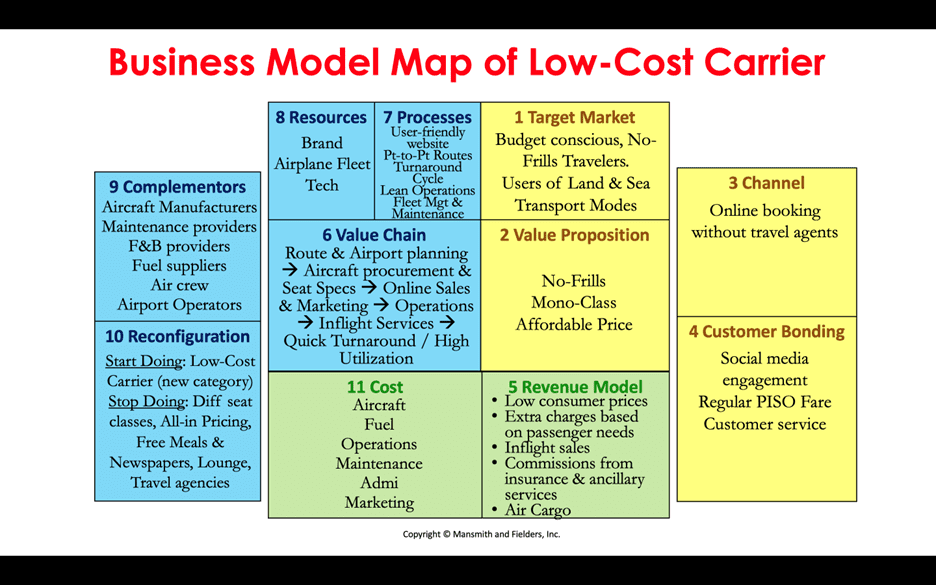
Rio Ilao is the Founder and CEO of MobileOptima, Inc., one of the top technology companies in the Philippines specializing in sales force automation and workforce management solutions. Its leading enterprise solution, Tarkie, digitizes and automates field processes like digital forms and field monitoring with real-time data to give companies 360 visibility on their field operations and help make real-time decisions. Now, it has more than 10,000 users nationwide. Rio was granted the Enterprise Innovator Award for Technology Innovation at the 2020 Mansmith Innovation Awards.
Q1: What was the inspiration behind the development of Tarkie?
A1: The idea of Tarkie was actually born out of our pain points as an entrepreneur. Before becoming a tech founder, my husband and I owned a retail business selling printer inks with branches in malls. We used to manage over 100 store employees.
One day, we were on the phone with one of our supervisors. His job was to visit our branches and we heard “may tumitilaok na manok sa background.” At 11 am, he was supposed to be in the mall and there should be no rooster there, right?! Though it’s quite obvious, it was hard for us to confront him about it, especially when we didn’t have solid proof.
Another pain point that we had was on improving our delivery productivity. We had a team of 10 riders that took care of the printer deliveries and repairs within Manila. Our riders would only complete a maximum of 4 trips per day. “Sagad na raw yan given the traffic in Manila.”Then, we hired a new person and that person, during his first week, was averaging 8 deliveries per day, which came as a pleasant surprise for us!
Given these experiences, we looked for a tool that could help us effectively monitor our field employees and promote transparency, but we could not find any. So we built our own, and Tarkie was born.
And the interesting thing was when we shared the idea of Tarkie with our fellow business owners, they also had the same problems and issues with monitoring employee activities in the field.
Some shared their horror stories of drivers finishing their deliveries at 4 pm and then parking somewhere to sleep until 8 pm, resulting in unnecessary overtime. There were also stories of field employees finishing their work by lunchtime and then going home to sleep in the afternoon and then clocking out at 5 pm as if the work just finished that time. Or even worse, field employees stay at home and just pretend to visit clients and even reimburse bogus transportation expenses.
These stories are certainly not something to be proud of but they definitely do happen in the real world. That’s why it motivated us to develop Tarkie further so we can help other companies who are in dire need to monitor field activities and put the right controls in place.
Q2: Which companies can benefit from Tarkie, and could you provide some specific examples of how your clients have benefited?
A2: Companies, of any size, who have field employees like merchandisers, sales agents, delivery crew, technicians, auditors, or even those who have work-from-home employees, can benefit from Tarkie.
They will be able to digitize and monitor their employees’ attendance wherever they are, track their itinerary and tasks throughout the day, and get reports on their field expenses, productivity, etc. – on their mobile phones, in real-time.
Chooks To Go has been using Tarkie since 2016. They have around 300 field employees whose task is to cover all their branches nationwide. Before Tarkie, one field employee could only cover 10 stores per day. But through automation of attendance, itinerary, and reports, now, that field employee can cover 20 stores per day, a 100% increase in productivity.
Aside from providing real-time productivity monitoring and workforce visibility, Tarkie also provides companies with real-time data on key business metrics, such as sales, out-of-stock, inventory levels, etc. Basically, any report can be digitized and automated through Tarkie.
Uratex uses Tarkie to collect the daily sales reports from their 750 stores nationwide in real-time. Before using Tarkie, the merchandisers needed to write on a paper form their sales for the day. These forms would be collected by area coordinators manually and then shipped to their head office, where they have an army of encoders that enter them into their system
This cycle used to take almost 6 weeks. This means that if management wanted to view their sales this month, they would have to wait that long. What if there are inventory losses? What if there are non-moving items that need special attention? It would already be too late to take action if the reports come after 6 weeks.
Now, the merchandisers just enter their sales and inventory information in their Tarkie app. And the head office sees the data in real-time.
Not only did they save on the cost of collecting, shipping, and encoding the forms, but through automation with Tarkie, they have made their sales process more efficient, enabling them to make real-time decisions as well.
Q3: How did your organization adapt to ensure the relevance of your products during the COVID-19 pandemic lockdown?
A3: One of our values as a company is innovation. If we want to stay relevant for our customers, we have to evolve and grow with them.
When the lockdown was announced, all of a sudden, nobody was doing fieldwork! Everybody just stayed home.
So, we launched Tarkie Work-From-Home. We integrated with Zoom so the employees can conveniently keep track of their meetings. We also added a task management module so employees can plan their tasks more effectively and be more productive throughout the day. Furthermore, using the Tarkie Mobile App, managers can monitor remotely what their team members are working on by viewing their team’s computer screenshots and activities.
Now that many companies are embracing a hybrid work arrangement, this new feature, born out of the pandemic, has been very helpful for our clients in managing their employees — not just those in the field but also those utilizing the hybrid work arrangement.
It puts the proper controls in place so that employees who are working remotely are not tempted to just watch Netflix, and YouTube, or spend countless hours on social media while they are being paid by the company. Putting these necessary controls in place promotes transparency and accountability and helps avoid any abuses.
Q4: What advice would you give to organizations considering the implementation of field automation solutions? How should they approach the process to ensure successful adoption?
A4: We have done over a hundred implementations, working with different types and sizes of companies. And we have seen varied results. Some companies have gotten only a 20% increase while some, like Bounty Chooks To Go, have doubled their productivity. Below are some takeaways that can help ensure successful adoption:
1) Do it one pain point or one process at a time. Do not attempt to go full blast. One of the common pitfalls we have observed is when a company decides to implement a digital transformation, they want to go from 0 to 100 – meaning from doing everything manually to digitizing everything. They have a long wish list of their requirements and they want a complete and perfect plan. They end up not implementing anything.
Instead, they should start with one pain point first, the most painful one. This is their lowest-hanging fruit. It can be as simple as automating attendance – for example, shifting from self-declared time sheets to secure attendance taking via a mobile app. This project can be implemented very quickly and they will realize that this simple shift will already solve 80% of their productivity problems.
Once this pain point has been solved, they can move on to the next – maybe, the automation of reports. Doing this in phases allows the organization to implement things quickly and cheaply and then learn from it before moving to the next phase.
2) Look for a service provider that is committed to grow with them. We strongly believe that software implementation is like a digital transformation journey. So they must find a partner who is committed to joining them in that journey.
We have fellow business owner friends who have been traumatized because they were left hanging in the air by their providers. So they must look for service providers who have a solid track record, especially in after-sales support.
And these are not necessarily foreign companies. In fact, it’s better to have a home-grown tech company because they are in the same time zone, have a local relationship manager that they can easily talk to, and can quickly make adjustments to the software when necessary.
3) Management willpower is very important. Any new technology or process implementation will result in resistance, as with any process or policy change they are implementing. So, they must be ready for it.
We’ve seen technology implementations fail because the company cannot fully implement the plans. When employees become resistant and give excuses, the management team falters and caves in.
Thus, tone from the top and willpower is very important in implementing digital transformation.
4) Technology is just an enabler. It is not a magic solution that will fix all their problems. If they have bad processes or no policies in place, technology will just magnify the problem.
So they must ensure that when implementing automation projects, they must also fix or streamline their processes to maximize its benefits. They have to constantly step back and ask these questions every step of the way, “Is this process really needed or am I just transferring an old and unnecessary process to the digital world? How can I simplify this?”
Q5: What advice would you offer to aspiring innovators entering the field of tech automation?”
A5: As an innovator, focus on delivering value to your customers and stakeholders. Be sensitive to your customers’ needs and commit to grow with them.
Tarkie actually started out only as a tracking tool for field employees. But by committing to grow with what our customers need, we were able to evolve Tarkie into a full-blown sales force automation tool, that includes workforce management, digital forms automation, sales, inventory and service modules, etc.
It’s really fulfilling when we talk to our clients and they tell us their stories of how Tarkie is helping them. From a mere employee tracking tool that we developed almost a decade ago, Tarkie is now being used by some of the biggest companies here in the Philippines.
We could not have been more grateful to our clients who have supported us all these years, our dedicated employees who are very passionate about helping us fulfill our vision, our mentors who guide us in every challenge along the way, and of course, to Mr. Josiah who has inspired us to level up our game and break new grounds.
***
Don’t miss Rio Ilao’s session at the 4th Mansmith Sales Summit on August 2, 2024, live at Carlos P. Romulo Auditorium, RCBC Plaza! For team registration, visit www.salessummit.com.ph.
*****
Josiah Go is chair and chief innovation strategist of Mansmith and Fielders Inc.
See more articles on Innovation.


